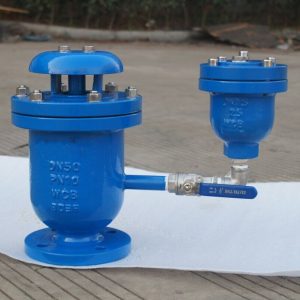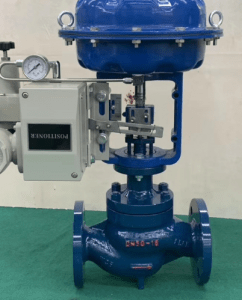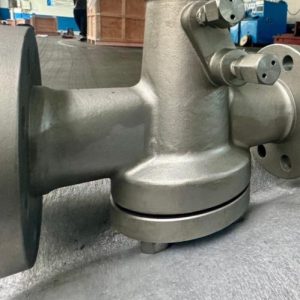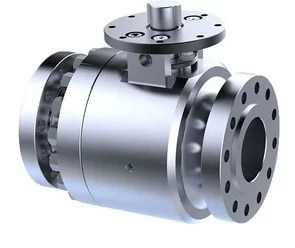Our Shop
Contact us for all your questions and requirements
Floating ball valve manufacturers in Europe
Valvesonly Europe a top Floating ball valve manufacturers in Europe, stands out as a reliable company offering durable, high-performance floating ball valves designed to meet the highest performance and reliability standards. Due to its simple operation and reliable sealing, floating ball valves are used extensively in numerous various industries. These valves contain a ball that is positioned by the pressure of the medium instead of being held against the stem. This enables the ball to “float” and bear against the downstream seat, making a tight seal.
Why Is It Necessary?
There are various reasons why floating ball valves are necessary.
Leak-Proof Operation: A tight seal is produced by the ball pressing against the downstream seat thanks to the floating design.
Versatile Applications: Adaptable to a broad spectrum of temperature and pressure levels.
Simple Operation: Opening and closing require very little torque.
Durability: Long service life due to the use of materials resistant to corrosion.
Fast Shut-Off: Perfect for urgent circumstances that call for instantaneous flow isolation.
Installation Guide:
Preparation: Ensure that the pipeline is free from rubbish and clean.
Ensure that valve specifications match the requirements of the system.
Positioning: As shown by the arrow on the valve body, place the valve in the correct direction of flow. Ensure proper alignment to prevent leaks.
Connection: Utilize the correct fasteners and gaskets. Bolts must be tightened uniformly to avoid misalignment.
Testing: To ensure smooth running, open and close the valve. To check for leaks, perform a pressure test.
Working:
To seal tightly, floating ball valves utilize the pressure of the medium to push the ball against the downstream seat.
The ball turns when the handle or actuator is turned 90 degrees, bringing the bore into alignment with the pipeline and allowing flow.
The ball turns to close off the bore and stop the flow when the handle or actuator is reversed.
Even where the pressure fluctuates, the floating ball mechanism ensures the valve does not leak.
Comparison between Floating Ball Valve and Trunnion Ball Valve?
How the ball is held is the primary difference between floating ball and trunnion valves:
Floating Ball Valve: The ball is not restrained to seal snugly and is pressurized into the seat by pressure from the medium. Floating ball valves can be utilized in low to medium pressure applications.
Trunnion Ball Valve: It is ideally suitable for high pressure since it is composed of trunnions supporting the ball from both sides and hence sharing the pressure from the seat. Trunnion ball valves provide improved stability and sealing in high pressure and temperature conditions.
Functions:
Flow Control: Facilitates precise flow regulation.
Shut-Off: Provides complete isolation of the medium.
Pressure regulation helps maintain a constant pipeline pressure.
Emergency Shut-Off: During an emergency, a rapid closing mechanism ensures safety.
Advantages:
Reliable Sealing: Despite changing pressure, a secure seal is guaranteed by the floating ball arrangement.
Simple Maintenance: Rapid disassembly and repair are made easy by the simple design.
Corrosion and wear resistance: Constructed of high-quality materials for a long service life.
Compact Design: Ideal for close installation spaces.
Cost-effective: In comparison to trunnion ball valves, floating ball valves are cheaper.
Key Parts:
Body: Constructed using corrosion-resistant material such as stainless steel or carbon steel.
Ball: Spherical ball with a central bore for flow when opened.
Seats: Give a leak-proof seal on the ball.
Stem: Links the ball to the handle or actuator.
Handle/Actuator: Operates the rotation of the ball.
Seals and Gaskets: Gives a tight seal and prevents leakage.
Pressure Relief Mechanism: Provides safety in high pressure.
Valve Types:
Soft-Seated Floating Ball Valve: Offers low torque operation with a tight seal.
Metal-Seated Floating Ball Valve: Well suited for abrasive and high-temperature media.
Two-Piece Floating Ball Valve: Two body pieces for easy maintenance.
Three-Piece Floating Ball Valve: More flexibility in repair and maintenance.
Full Bore Floating Ball Valve: Maximum flow with minimum pressure drop.
Reduced Bore Floating Ball Valve: Flow capacity is reduced but control is improved.
Industries:
Oil and Gas: To regulate high-pressure crude oil and gas flow.
Water Treatment: Utilized in pipelines to control water flow.
Chemical Processing: Manages aggressive chemicals and corrosive media.
Power Generation: Regulates steam and cooling water flow.
Pharmaceutical: Provides contamination-free operation.
Marine: Suitable for seawater and other corrosive fluids.
Petrochemical: Regulates high-pressure and high-temperature processing.
Description:
Body Material: Stainless steel, brass, or other metals, Cast Steel (WCB, WCC, WC6, WC9), Cast Iron, SS316, SS304, Forged Steel (F22, F51, LF2, F304, F304L, F316, F316L)
Size:1/4’’ to 48’’
Class: 150-2500; PN 10-PN 450
Ends: Buttweld, Flanged, Socket weld, Threaded
Operation: Gear operated, Electric actuated, Lever-operated, Pneumatic actuated.
Floating ball valves are created to deliver effective flow control and dependable shut-off in different industrial applications. The floating design permits the ball to seat against the downstream seat in a tight seal even under conditions of fluctuating pressure. These are therefore applicable for low to medium pressure systems. Valvesonly Europe is a reliable source of high-quality Floating ball valve manufacturers in Europe, providing various floating ball valves that are specially designed to cater to the particular needs of different industries.
Showing all 2 results










